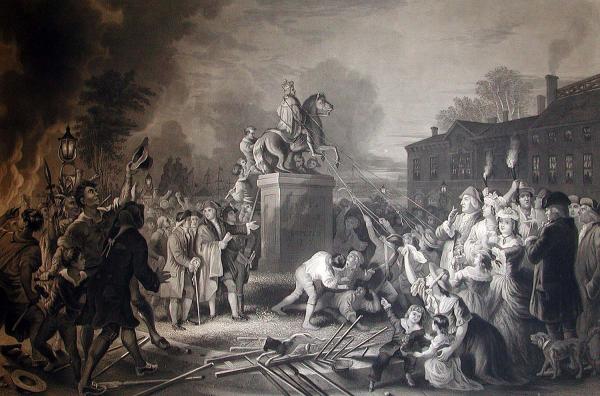On This Day: First Public Reading of the Declaration of Independence

According to the eye witness accounts, the mob included soldiers, sailors, blacks, and a few lower class citizens; not the women, children, and Native Americans depicted in this engraving. The statue in the image is wearing eighteenth century clothing and a crown. No image exists of the actual statue, but descriptions of it mention that it was sculpted wearing a Roman toga. All that is left of the statue are a few fragments that broke off when it fell to the ground. The statue only stood erect in Bowling Green for six years, as it was originally commissioned to celebrate the repeal of the Stamp Act in 1766.
This incident was symbolic because it showed that Americans were ready to be independent and free from tyrannical rule, but also by pulling down a statue of the King, it was a symbolic gesture to make historic change from the rule of a monarchy to the rule of a democracy.
From Teaching US History: Pulling Down the Statue of George III.

You must be logged in to post a comment.